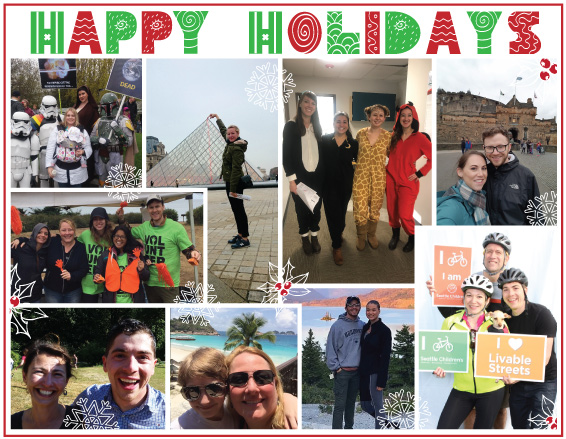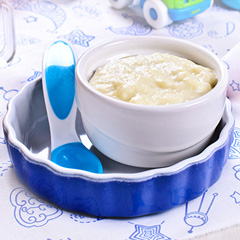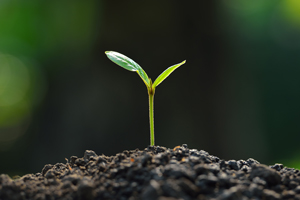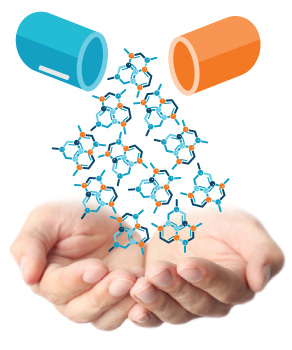Jan 18, 2018

A chemist from Brooks Applied Labs recently traveled with a group to Cuba for two weeks, and she shared her experiences during this fascinating adventure with us. It was an exciting opportunity to connect with Cubans to learn what life is like there for many people, with a focus on the lives and roles of women in Cuba. Brooks Applied Labs values our diverse staff with rich backgrounds and experiences. We believe that having employees who can bring varied perspectives together allows for an incredible, inclusive culture that fosters limitless learning opportunities.
To experience a slice of Cuban childhood and education firsthand, the group was able to visit a large primary school for grades 1-8. She found the breadth of studies available to be impressive. “It was a huge school. They had a zoo with animals like a monkey, a crocodile… there was an agricultural farm.” She explained how the zoo was a part of the curriculum, with classes teaching biology and how to care for the animals. The school put on a dance performance for the visiting Americans to demonstrate their arts program, which teaches dance, singing, musical instruments, visual arts, and more. “Seeing how confidently they were [dancing] was really amazing. Our group was crying at the end of the experience.”
A visit to a maternity clinic provided insight on the healthcare available to women in Cuba. According to UN World Population Prospects, the infant mortality rate in Cuba has dropped drastically in the past half-century, with rates now lower than the United States. Many of the women were from rural areas and were staying at the clinic because of its focus on chronic illnesses such as diabetes. Women in every region have access to these specialized maternity clinics.
The group visited small towns and rural areas, and met with the about 50 women in leadership positions at an agricultural co-op. “They were very happy to meet us and welcomed us with food and coffee that they had produced. They wanted to get to know us, too.” They explained that one purpose of the co-op is for farmers to be able to share machinery. Instead of each of the many farmers buying his or her own tractor, they are able to share a few within the co-op. The co-op also helps with loan assistance, pools resources, and provides many other services for the community.
The women they met hold many different positions from finance management to agricultural engineering, and the women there held a majority of the leadership positions of the co-op. This was important to see, she explained, because “without a co-op, these leadership roles don’t exist, so it helped cultivate positions for women and gave them the opportunity to step into a leadership role. In turn, you now have a co-op that mainly women are running.”
Stepping a bit further from the city and small towns, she was able to enjoy the natural beauty that Cuba has to offer as well, summiting the highest peak in Cuba, Pico Turquino. It may have been challenging – it was a 26-km hike over three days – but she explained how much she enjoyed it. “It was really cool… we got to be in nature and see the biological diversity in the tropics. It’s very dense. There are a lot of birds, a lot of bird watching” Her favorite? The beautifully colorful national bird of Cuba, “called the Tokororo (pictured), because that’s the noise it makes!”
Now back in Seattle, she is excited to share her observations and experiences with the community at home. We are glad to have her back with us at Brooks Applied Labs and are very grateful for the chance for all of us to learn more about Cuba!
Jan 18, 2018

Part of BAL’s vision is to support better environmental, human health, and scientific decision-making in a workplace that honors your core values. We don’t just post this on the wall of the lobby, we live it every day and love what we do, who we work with, and where we call home. Whether you desire a career as a renowned analytical chemist, a rock-star project manager, a quality assurance guru, or a business development professional, BAL has great opportunities for both entry-level and experienced candidates. See our Careers page to find out more about how you can be a part of our amazing team.
Jan 18, 2018
 Each holiday season, Brooks Applied Labs collects food for a local food drive. This year our office provided 120 pounds of food for hungry families in a rural part of our region. A big thank you to Jen Wallawine (BAL’s Inventory Management Specialist) and her husband for coordinating the donation bins and delivering everything to the Sultan Food Bank.
Each holiday season, Brooks Applied Labs collects food for a local food drive. This year our office provided 120 pounds of food for hungry families in a rural part of our region. A big thank you to Jen Wallawine (BAL’s Inventory Management Specialist) and her husband for coordinating the donation bins and delivering everything to the Sultan Food Bank.
Dec 20, 2017

From all of us at Brooks Applied Labs
As we look back on the many wonderful memories from 2017, we are reminded of
how much we have to be thankful for. Brooks Applied Labs is blessed with amazing
clients and colleagues, a growing business, and a brilliant and dedicated staff.
Thank you.
Warmest wishes for the holiday season,
Brooks Applied Labs
Dec 13, 2017
 In December 2017, The New York Times (and featured in the February 2018 ACIL Industry Insights (American Council of Independent Laboratories)) highlighted an important study by Healthy Babies Bright Futures (HBBF) which explored the topic, “Should You Be Worried About the Arsenic in Your Baby Food?” In both the article and in the associated HBBF report (found here), Brooks Applied Labs was named as the analytical laboratory partner that provided the testing services for total arsenic and arsenic speciation in a broad variety of baby foods. From the HBBF report, “We commissioned a nationally recognized laboratory with expertise in arsenic analysis, Brooks Applied Labs (BAL) near Seattle, Washington (https://brooksapplied.com/), to test for arsenic in the 105 cereal containers included in this study…BAL specializes in low-level metal analysis, including arsenic analysis in food. It has tested a wide range of cereals and grains. Its sensitive methods can detect arsenic in a wide range of infant cereal types, including non-rice varieties with low arsenic amounts.”
In December 2017, The New York Times (and featured in the February 2018 ACIL Industry Insights (American Council of Independent Laboratories)) highlighted an important study by Healthy Babies Bright Futures (HBBF) which explored the topic, “Should You Be Worried About the Arsenic in Your Baby Food?” In both the article and in the associated HBBF report (found here), Brooks Applied Labs was named as the analytical laboratory partner that provided the testing services for total arsenic and arsenic speciation in a broad variety of baby foods. From the HBBF report, “We commissioned a nationally recognized laboratory with expertise in arsenic analysis, Brooks Applied Labs (BAL) near Seattle, Washington (https://brooksapplied.com/), to test for arsenic in the 105 cereal containers included in this study…BAL specializes in low-level metal analysis, including arsenic analysis in food. It has tested a wide range of cereals and grains. Its sensitive methods can detect arsenic in a wide range of infant cereal types, including non-rice varieties with low arsenic amounts.”
Brooks Applied Labs is honored to be part of such an important study that will undoubtedly have a direct impact on the future of infant nutritional safety and possible future FDA regulation in this area.
Visit our Food, Beverages & Supplements page to learn more.
Nov 16, 2017
 At Brooks Applied Labs, we are proud of our cultural diversity and the varied ethnic backgrounds of our employees. We believe that an inclusive work culture that embraces our differences is one of the keys to our success. And what better way to celebrate our diversity than with food! November 7th marked the 3rd Annual BAL International Potluck, where employees brought dishes from or inspired by their culture or heritage. The delicious dishes included Japchae from Korea, Swedish cinnamon rolls, German pot roast, Southwestern chili, a Maryland shrimp boil, and even British-inspired salt-and-vinegar potato chips. Already looking forward to next year’s potluck!
At Brooks Applied Labs, we are proud of our cultural diversity and the varied ethnic backgrounds of our employees. We believe that an inclusive work culture that embraces our differences is one of the keys to our success. And what better way to celebrate our diversity than with food! November 7th marked the 3rd Annual BAL International Potluck, where employees brought dishes from or inspired by their culture or heritage. The delicious dishes included Japchae from Korea, Swedish cinnamon rolls, German pot roast, Southwestern chili, a Maryland shrimp boil, and even British-inspired salt-and-vinegar potato chips. Already looking forward to next year’s potluck!
Oct 19, 2017
 Just in time for Halloween, scientists from BAL recently contributed to a new paper evaluating the risk of using metal-containing costume cosmetics. The article, published in the journal Regulatory Toxicology and Pharmacology and co-authored by BAL’s Elizabeth Madonick, estimated exposure to As, Co, Hg, Ni, Pb, and Sb via incidental ingestion and dermal uptake. Within the limited scope of this study, the results suggest that intermittent use of costume cosmetics does not pose an unnecessary health risk to consumers, but if you plan on trick-or-treating year-round, your exposure may exceed guidance values. Have a fun and safe Halloween everyone!
Just in time for Halloween, scientists from BAL recently contributed to a new paper evaluating the risk of using metal-containing costume cosmetics. The article, published in the journal Regulatory Toxicology and Pharmacology and co-authored by BAL’s Elizabeth Madonick, estimated exposure to As, Co, Hg, Ni, Pb, and Sb via incidental ingestion and dermal uptake. Within the limited scope of this study, the results suggest that intermittent use of costume cosmetics does not pose an unnecessary health risk to consumers, but if you plan on trick-or-treating year-round, your exposure may exceed guidance values. Have a fun and safe Halloween everyone!
Oct 19, 2017
 Contamination from trace metals, such as arsenic (As) and lead (Pb) in soils, can lead to potential health risks from inhalation and ingestion of the soil or vegetables grown in the soil. While it is well known that different molecular forms of As and Pb have different toxicological effects, the correlation between elemental species in the soil and the bioaccessibility of the metals from that soil has not been well established. For instance, tetraethyllead was historically added to gasoline, while lead chromate, lead oxide, and lead carbonate were common pigments added to paint. All of these compounds could be present in contaminated soil and each has a different degree of bioaccessibility.
Contamination from trace metals, such as arsenic (As) and lead (Pb) in soils, can lead to potential health risks from inhalation and ingestion of the soil or vegetables grown in the soil. While it is well known that different molecular forms of As and Pb have different toxicological effects, the correlation between elemental species in the soil and the bioaccessibility of the metals from that soil has not been well established. For instance, tetraethyllead was historically added to gasoline, while lead chromate, lead oxide, and lead carbonate were common pigments added to paint. All of these compounds could be present in contaminated soil and each has a different degree of bioaccessibility.
Typical risk assessment models assume that 60 to 100% of contaminant metals in a soil sample are bioaccessible; however, these assumptions can result in incorrect health risk assessments and unnecessarily high remediation costs because it has been demonstrated that actual bioaccessibility can range from 0 to 100%. In vivo animal studies are often used to determine bioaccessibility, which are expensive and time consuming. The demand for reliable and affordable methods to improve the accuracy of risk assessments and assist regulators in making responsible remedial decisions, while still protecting human health, has been growing in recent years. This demand is being met with methods such as EPA Method 1340 “In Vitro Bioaccessibility Assay for Lead in Soil”. This method was validated for Pb-contaminated soil under field conditions and released in February 2017.
The California Department of Toxic Substances Control (DTSC) worked with The Ohio State University to develop an in vitro method for As bioaccessibility. The California Arsenic Bioaccessibility (CAB) Method was validated against the swine method, which is historically the most commonly used animal model for evaluating site-specific arsenic toxicity. The CAB Method has been approved for use in evaluating site-specific relative bioavailability of As in contaminated soils in the State of California as outlined by DTSC’s Human Health Risk Assessment Note 6.
Understanding the details of these methods and the appropriate applicability for each is part of the expert customer service you can expect from Brooks Applied Labs. Please feel free to contact us to discuss how your project might benefit from analyses for bioaccessible metals.
 The biological significance of metals from both pharmaceutical drug discovery and production aspects has increased significantly over the past two decades. Integration of trace metals in complex pharmaceuticals, both small and large molecule, can play a key role in their viability as well as their stability. Furthermore, active sites on organic molecules will dictate their adsorptive properties (“stickiness” to the outside of the molecule) for trace metals, which can also impact clinical efficacy. Brooks Applied Labs has a long history of supporting both the prevention and cure for cancers and other human ailments through research, consulting, and analytical services.
The biological significance of metals from both pharmaceutical drug discovery and production aspects has increased significantly over the past two decades. Integration of trace metals in complex pharmaceuticals, both small and large molecule, can play a key role in their viability as well as their stability. Furthermore, active sites on organic molecules will dictate their adsorptive properties (“stickiness” to the outside of the molecule) for trace metals, which can also impact clinical efficacy. Brooks Applied Labs has a long history of supporting both the prevention and cure for cancers and other human ailments through research, consulting, and analytical services.





 At Brooks Applied Labs, we are proud of our cultural diversity and the varied ethnic backgrounds of our employees. We believe that an inclusive work culture that embraces our differences is one of the keys to our success. And what better way to celebrate our diversity than with food! November 7th marked the 3rd Annual BAL International Potluck, where employees brought dishes from or inspired by their culture or heritage. The delicious dishes included Japchae from Korea, Swedish cinnamon rolls, German pot roast, Southwestern chili, a Maryland shrimp boil, and even British-inspired salt-and-vinegar potato chips. Already looking forward to next year’s potluck!
At Brooks Applied Labs, we are proud of our cultural diversity and the varied ethnic backgrounds of our employees. We believe that an inclusive work culture that embraces our differences is one of the keys to our success. And what better way to celebrate our diversity than with food! November 7th marked the 3rd Annual BAL International Potluck, where employees brought dishes from or inspired by their culture or heritage. The delicious dishes included Japchae from Korea, Swedish cinnamon rolls, German pot roast, Southwestern chili, a Maryland shrimp boil, and even British-inspired salt-and-vinegar potato chips. Already looking forward to next year’s potluck! Just in time for Halloween, scientists from BAL recently contributed to a new paper evaluating the risk of using metal-containing costume cosmetics. The article, published in the journal
Just in time for Halloween, scientists from BAL recently contributed to a new paper evaluating the risk of using metal-containing costume cosmetics. The article, published in the journal  Contamination from trace metals, such as arsenic (As) and lead (Pb) in soils, can lead to potential health risks from inhalation and ingestion of the soil or vegetables grown in the soil. While it is well known that different molecular forms of As and Pb have different toxicological effects, the correlation between elemental species in the soil and the bioaccessibility of the metals from that soil has not been well established. For instance, tetraethyllead was historically added to gasoline, while lead chromate, lead oxide, and lead carbonate were common pigments added to paint. All of these compounds could be present in contaminated soil and each has a different degree of bioaccessibility.
Contamination from trace metals, such as arsenic (As) and lead (Pb) in soils, can lead to potential health risks from inhalation and ingestion of the soil or vegetables grown in the soil. While it is well known that different molecular forms of As and Pb have different toxicological effects, the correlation between elemental species in the soil and the bioaccessibility of the metals from that soil has not been well established. For instance, tetraethyllead was historically added to gasoline, while lead chromate, lead oxide, and lead carbonate were common pigments added to paint. All of these compounds could be present in contaminated soil and each has a different degree of bioaccessibility.